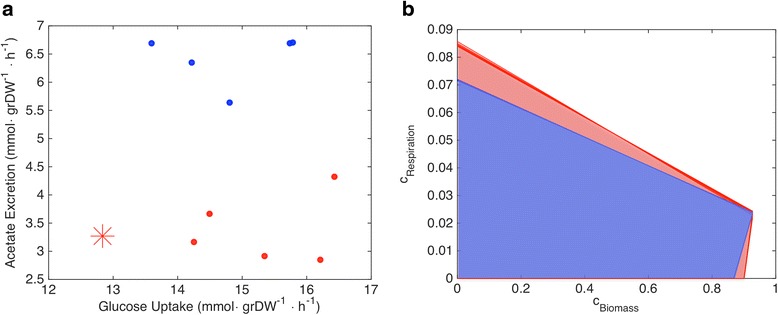Fig. 5.

Application of invFBA to long-term evolved E. coli strains. a Experimental measurements (by Harcombe et al. [6]) of acetate excretion and glucose uptake for the ancestral (red star) and evolved (blue and red dots) E. coli strains from Lenski’s long-term evolutionary experiment. The red and blue colors are used here to highlight two distinct metabolic regimes that different strains seem to cluster around. b A projection (onto a two-dimensional subspace) of the set of objective functions compatible with experimentally measured fluxes. The graph is obtained through a two-dimensional version of OVA: for each possible value of the growth flux coefficient of the objective function (cBiomass), one can find the minimal and maximal value of the objective function coefficient for the respiratory flux (cRespiration), obtaining areas that correspond to objective functions compatible with the measured fluxes. Such regions can be computed for the ancestral and all evolved E. coli strains. The strains corresponding to the different metabolic regimes (blue and red dots in a) map onto different regions in the space of objectives, labeled with similar colors
